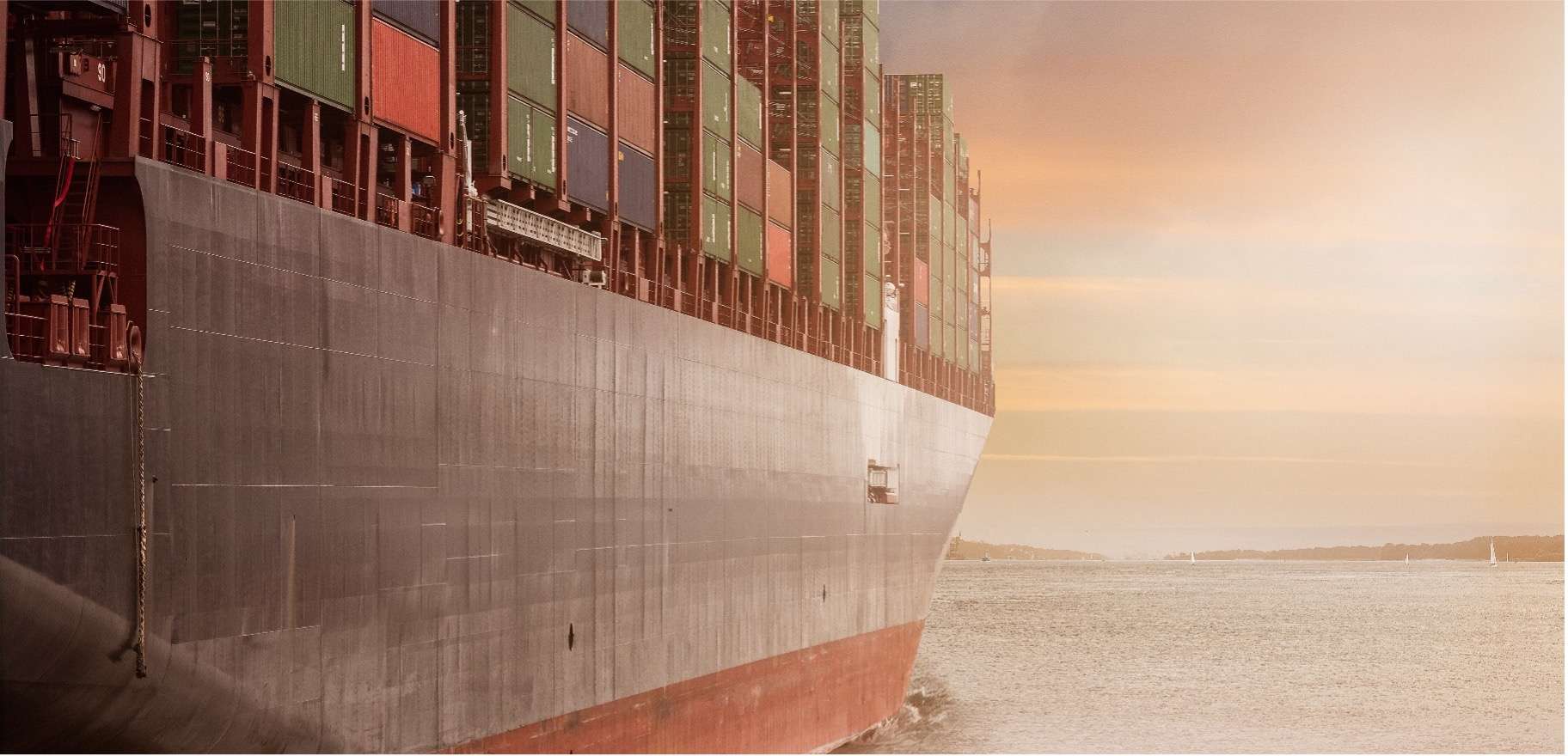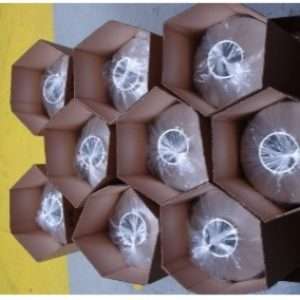Discover the news of the industrial group expert in the protection of sensitive and hazardous materials, as well as the list of trade shows and events in which Tournaire participates.
The impact of crisis on the transporting of goods and some ideas on how best to tackle them

The financial crisis of 2008 had a substantial impact on world trade and transporting of goods. What about the health crisis of 2020? How can future crises be tackled in order to minimize their impact? After a quick overview of the current logistics situation, we offer some ideas on how to minimize or even take advantage of the impact of crises on the transporting of goods.
2020 has been a unique year, with a global health crisis that has hit the planet in a context of geopolitical tensions. The economic impacts related to COVID-19 are substantial in terms of the international transporting of goods and, for the first time, most of us have experienced border closures or population confinement.
In the international transporting of goods, there have been significant impacts on the availability of outgoing containers with repercussions on delivery times and also, inevitably, on FOB and freight tariffs that, in some cases, have doubled.
1. THE LOGISTICS CHAIN: COMPLEX, COMPETITIVE, BUT FRAGILE
2. CRISES AND THEIR IMPACTS ON COMPANY LOGISTICS POLICIES
3. TWO KEY ELEMENTS OF A LOGISTICS POLICY IN TIMES OF CRISIS
4. THE CRISIS: AN OPPORTUNITY IN TRANSPORTING GOODS
5. BETTER TACKLING CRISES IN INTERNATIONAL TRANSPORT
6. TOURNAIRE EMBALLAGE, A PARTNER OF CHOICE FOR THE TRANSPORTING OF GOODS
THE LOGISTICS CHAIN: COMPLEX, COMPETITIVE, BUT FRAGILE
In a world in perpetual motion, international trade has multiplied since the end of the Second World War. Since the 1980s, we talk of globalization, with a rapid increase in the international exchanging of goods and services and capital movements. The growth in logistics is even greater than the growth in world production. To meet this increasing demand, the transport sector has organised itself. Thanks to a diversification of product components, transport is today mainly carried out by sea, occupying 70% of the volume, road 18%, rail networks 9%, canals 2% and air merely 0.25% despite the latter mode of transport representing approximately 35% of the total transported value.
According to the OECD, the international transport market could triple in volume by 2050 (see the 2019 study at https://www.itf-oecd.org/). The creation of value chains has accompanied this movement by seeking ever greater efficiency. Incoming flows must arrive on time and in the right quantity (‘on time in full’ or OTIF), while respecting the desired level of quality. Outgoing flows from production factories undergo the same treatment: they must leave and arrive on time, generate low CO2 emissions, all at rates that favour sales. The goods transport sector has, therefore, become extremely competitive, heterogeneous and segmented and requires complex management. In the face of all these pressures, the sector has been transformed, with multimodal transport developing strongly since the 1960s. It provides an increasingly better response to the many issues of profitability in the supply chain.
However, this race for performance makes the sector fragile. The intensity and tension in the market make it a sector that is subject to the vagaries of uncontrolled external and internal crises. It is becoming complicated to find the right balance between flexibility (service, punctuality, organisation, traceability, etc), sustainability and costs.
CRISIS AND THEIR IMPACT ON COMPANY LOGISTICS
In 2008, during and even after the financial crisis, trade in goods experienced a sharp slowdown. Political crises such as the ‘yellow jackets’ crisis in France had a direct impact not only on domestic road transport but also on European flows.
The 2020 health crisis has directly led to a decrease in the production of foodstuffs and goods, with a large number of bankruptcies, temporary reconversions or relocations. The logistics sector in particular has suffered deeply and had to adapt. A second impact of the 2020 health crisis is psychological: this crisis has been unique in its scale, duration and the privations suffered. Even though States are subsidizing the recovery, industrial companies suffering shock due to this major crisis will favour prudent investments in 2021 and the recovery will be slow. The transport sector will be directly impacted.
TWO KEY ELEMENTS OF A LOGISTICS STRATEGY IN TIMES OF CRISIS
One crisis follows another but with different natures and intensities: the conjunction of economic, geopolitical and ecological tensions increases their occurrence and criticality. It is, therefore, essential to be prepared and take into consideration most of the elements of the goods transport value chain in order to stand out. Logistics is a major link in this process.
1 – LOGISTICAL
Each company has its own logistics flow management. Such organisation merits a brief summary of its fundamentals, which may need to be adapted in times of crisis.
‘Pull-flow’ logistics consists of triggering production only when the customer orders it. It is, therefore, a matter of waiting for an actual order from the customer before starting the supply sourcing and manufacturing of products. This allows for extreme flexibility and a direct reduction in production costs. It does, however, impose potentially long delivery times, especially if coupled with supply difficulties (eg, defective raw materials, delayed delivery, etc). This logistics system is similar to the Kanban method that was initiated in the 1950s for Japanese on-demand automotive production. It avoids excess production, scrapping and expiry dates and enables the customization of customer products. The result is a low stock level and reduced storage costs, with little intermediate storage due to ‘just in time’ deliveries.
The opposite is ‘push-flow’ logistics. This is a strategic production method that consists of producing and storing before the customer places an order. This requires the company to forecast its order flows, anticipate and plan for its customers’ needs, but does have a negative impact on cash flow by increasing inventories (raw materials, intermediate or semi-finished products and finished products). On the other hand, it provides an appreciable service to the customer with immediate availability of products.
These two ‘theoretical’ policies are, of course, adapted in each industrial entity according to market and production constraints. Many alternatives or intermediate solutions exist, such as stocks of intermediate products that are ready to be personalized or smaller volumes in order to reduce delivery times for the customer as much as possible. An overall analysis of flows, buffer stocks, delivery and production times often leads to effective solutions in times of crisis.
2 – CHOICE OF PARTNERS AND TRADE ROUTES
There are many stakeholders in the logistics chain: internal logistics expert, insurer, charterer, freight forwarder, shipping or airline company, storage operator, accredited customs representative, etc). It is clearly important to ensure overall efficiency, even in difficult times. For external partners, an accreditation such as ISO 9000 or 28000, CSCP (Certified Supply Chain Professional) or Authorised Economic Operator are guarantees of reliability. A strict policy on the choice of transport suppliers is crucial, but efficiency must also be verified by permanent assessments and frequent audits. In times of crisis, not only must your partners be reliable, flexible and creative, but you must also draw up specifications that are strict, realistic and, moreover, adaptable in difficult times.
The choice of goods transport partners is necessarily linked to the choice of trade routes. The shortest route in normal times is no longer necessarily the shortest when there is a strike or logistical shortage. For example, during the ‘yellow jacket’ crisis or the 1992-1996 trucking crisis, an Italian company wanting to deliver in England was able to choose partners using German rather than French trade routes.
THE CRISIS: AN OPPORTUNITY FOR TRANSPORTING OF GOODS
While the crisis can often take a devastating toll, it can become an opportunity for companies that anticipated it. In addition to the means of improvement referred to above, there is one that is often neglected in normal times but that can be decisive in a raging crisis and that is the choice of packaging.
PACKAGING AS A LOGISTICAL AND COMMERCIAL OPPORTUNITY
 Packaging is a crucial link in the supply chain. It can be classified according to its construction materials, functions, performance and size. There are usually two main branches: primary packaging and secondary packaging.
Packaging is a crucial link in the supply chain. It can be classified according to its construction materials, functions, performance and size. There are usually two main branches: primary packaging and secondary packaging.
Primary packaging represents the last barrier between the finished product and the exterior, the ultimate defence of the value that the company transports. It is the ultimate sales showcase and, for sensitive products, the source of protection for the product and the user. Well chosen, it enables, among other things, the lifespan of the product to be extended and, therefore, its sales – a very significant argument in times of transport difficulties.
 To bundle and protect the primary packaging, ‘secondary packaging’ is used. This may, for example, be a multi-pack carton that holds one or more primary packaging units. The choice of the overall solution (primary and secondary packaging) is important in order to guarantee the integrity of the primary packaging and, therefore, the sales value of the product.
To bundle and protect the primary packaging, ‘secondary packaging’ is used. This may, for example, be a multi-pack carton that holds one or more primary packaging units. The choice of the overall solution (primary and secondary packaging) is important in order to guarantee the integrity of the primary packaging and, therefore, the sales value of the product.
Lastly, there is tertiary packaging, often being a pallet containing secondary packaging that is attached to the pallet by shrink film or various ties or straps. This is the ideal transport packaging for products in industrial quantities.
The choice of the type of packaging is crucial, as is the choice of the packaging supplier. If the supplier is familiar with the product and the chain of use, it will be able to offer complete primary packaging solutions with adapted accessories and even adapted secondary packaging. In terms of safety and peace of mind, this is a real advantage that ensures the preservation, protection and good presentation of the products and compliance with regulatory constraints. For the transport of hazardous materials, for example, compliance with UN approvals is vital whatever the mode of transport chosen. A truck or plane can be blocked by a regulatory problem and the product unloaded.
Other services can ensure safe transportation such as unit traceability of packaging, the monitoring of pressure or temperature in contact with the product. This can be useful in the event, for example, of an unexpectedly prolonged storage on the tarmac of an airport during a strike.
Good packaging sold by a qualified supplier that is well informed of the chain of use is a guarantee of the best overall solution capable of avoiding logistical problems. It will not, however, necessarily be the most economical solution…
BETTER TACKLING CRISES IN INTERNATIONAL TRANSPORT
Periods of crisis generate significant difficulties for companies. While they reveal weaknesses, they also allow companies to stand out. By reconsidering and adapting its logistics strategy and verifying every link in the chain, the company ensures its durability and reassures its customers. A single link, such as packaging, usually considered as non-critical, provides a significant safety margin in the event of a blockage, especially for sensitive products. Lastly, customer service is guaranteed and commercial value added to the product, hence the importance of choosing suitable packaging and a reliable supplier.
TOURNAIRE EMBALLAGE, A PARTNER OF CHOICE FOR THE TRANSPORTING OF GOODS
Tournaire, founded in 1833, was created with the first plant distillers in Grasse, France. The group has developed its know-how along with changes in the perfume industry and according to the specific needs of its customers.
Today, Tournaire puts its recognised expertise in the design and manufacture of high-quality technical packaging at the service of industries around the world. With the most comprehensive range of 50 cc to 32 litre coextruded aluminium and plastic packaging on the market, Tournaire Emballage supplies a variety of industries, such as the pharmaceutical, perfume, foodstuffs and specialised chemical industries, while maintaining a high level of quality, service and safety. Close to its customers and attentive to the seasonal nature of each sector, Tournaire accompanies them throughout the supply chain in the management of flows due to dynamic and optimised stock management.
The identification of products by labels and barcodes ensures the traceability of the packaging, from manufacture to destination. Tournaire also offers a wide choice of primary and secondary packaging that is adapted to the various modes of shipment (road, air or sea). Protections have been specifically designed, for example, for combined ‘air/sea’ transport: overpacks, pallets and reinforced cardboard boxes.
Contact Tournaire Emballage today for more information on how to package your products and the adequacy of your logistics chain.